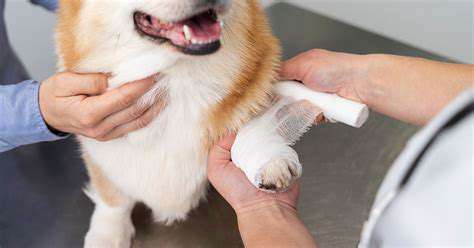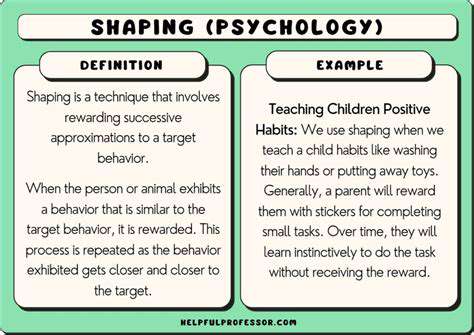How to Care for a Puppy Mill Rescue
Physical Needs
Puppy mill dogs often arrive with a range of physical needs, stemming from the deplorable conditions in which they were raised. Poor nutrition, lack of veterinary care, and inadequate socialization can lead to a multitude of issues. Owners must be ready to tackle these challenges, which might include nutritional deficiencies, dental problems, parasites, and underlying health conditions requiring ongoing veterinary attention. Thorough veterinary examinations, including blood work and appropriate screenings, are non-negotiable to assess the puppy's current health and establish a baseline for future care.
Beyond immediate physical needs, preventative care plays a pivotal role. Regular veterinary checkups, vaccinations, parasite prevention, and dental care form the foundation of long-term health. Proper nutrition tailored to the puppy's breed, age, and activity level supports healthy growth and weight management. Owners should remain observant for any behavioral or physical changes that might signal emerging health issues, enabling early intervention.
Emotional Needs
The emotional scars from a puppy mill environment can run deep. These dogs often carry fear, anxiety, and trauma, manifesting in behavioral challenges. Addressing these emotional wounds is critical for the puppy's well-being and fostering a trusting bond with their new family. Patience, consistency, and a nurturing environment are the cornerstones of helping the puppy overcome lingering anxieties. Early socialization, positive reinforcement training, and a stable home environment are essential for building trust and confidence.
Recognizing stress or fear signals is equally important. Changes in appetite, excessive barking, destructive behaviors, or withdrawal may indicate underlying distress. Consulting a veterinarian or certified dog behaviorist can help pinpoint the root cause and develop a tailored solution. Early intervention often prevents more severe behavioral issues from developing.
Socialization and Training
Socialization is particularly vital for puppy mill rescues, who may lack exposure to diverse experiences. Controlled, positive socialization helps them acclimate to new sights, sounds, and environments. Introducing the puppy to different people, animals, and settings gradually—under professional guidance—builds confidence and reduces anxiety. Learning appropriate social cues is key to preventing future problems and strengthening the bond with their new family.
Consistent, positive training provides structure and security. Reward-based methods, such as treats and praise, are far more effective than punishment. Training should focus on basic commands, good manners, and strengthening the human-animal bond. This approach not only instills confidence but also equips the puppy with essential life skills for a harmonious household.
Patience and Positive Reinforcement Training

Patience in Training
Patience is crucial when training any animal, especially when teaching complex behaviors. Rushing the process can backfire, creating frustration and negative associations. A gradual, consistent approach yields the best results. Understanding the animal's learning pace and adjusting accordingly fosters success. Repetition and reinforcement build confidence and trust.
Every animal learns differently. Some grasp concepts quickly; others need more time. Maintaining a calm, patient demeanor is essential for creating a positive learning environment. This allows the animal to feel secure and receptive to training.
Positive Reinforcement Techniques
Positive reinforcement rewards desired behaviors, encouraging repetition. This method builds trust and motivation. Treats, praise, or toys as rewards strengthen the desired response effectively. By reinforcing good behavior, you increase the likelihood of it recurring, fostering a positive learning experience.
Understanding Animal Communication
Reading your animal's body language is key to successful training. Recognizing signs of discomfort, stress, or excitement helps tailor your approach. This awareness builds trust and deepens the bond between you and your pet.
Consistency in Training
Consistency is the backbone of effective training. Regular, short sessions are more productive than sporadic, lengthy ones. A predictable routine helps the animal understand expectations and feel secure.
Setting Realistic Goals
Break complex behaviors into smaller, achievable steps. This makes learning manageable and rewarding for the animal. Overloading them with too much at once leads to frustration.
Adapting to Individual Needs
Every animal is unique. Adjusting training methods to suit their personality and learning style is crucial. Tailoring the approach ensures the process is enjoyable and effective for both of you.
Addressing Challenges and Mistakes
Setbacks are part of the learning process. Instead of discouragement, view them as opportunities to refine your approach. Understanding the root of mistakes allows for constructive adjustments. Patience and positivity keep the training environment supportive.
Addressing Behavioral Issues: Anxiety and Fear
Understanding the Roots of Anxiety
Puppy mill rescues often arrive with a complex history of trauma. Cramped, unsanitary conditions and lack of socialization can lead to deep-seated anxiety and fear. These dogs may exhibit fear-based behaviors like hiding, trembling, or excessive barking. Recognizing these signs early is critical for providing the right support.
Creating a Safe and Predictable Environment
A stable routine minimizes stress. Consistent feeding, play, and rest times help the dog feel secure. Designate a quiet retreat space where they can unwind. Gradual introductions to new experiences prevent overwhelm.
Addressing Specific Fears
Identify triggers like loud noises or strangers. Gradual, positive exposure helps desensitize the dog. Consulting a professional ensures safe, effective techniques. Progress may be slow, but consistency is key.
Socialization and Building Trust
Introduce new people and environments slowly. Positive reinforcement creates good associations. Patience and understanding foster confidence and trust over time.
Read more about How to Care for a Puppy Mill Rescue
Hot Recommendations
- Review: [Specific Brand] Small Animal Cage
- Why Rescuing Pets Saves Lives
- Best Pet First Aid Kits [What to Include]
- How to Help Stray Animals in Your Community
- Guide to Adopting a Pet When You Have Kids
- Top Reptile Heat Lamps
- Heartwarming Rescue Stories That Will Inspire You
- Review: [Specific Brand] Bird Cage
- Best Aquarium Filters [2025 Review]
- Review: [Specific Brand] Smart Litter Box


![Review: [Specific Brand] Pet Odor Eliminator](/static/images/33/2025-05/ValueforMoneyandAlternatives.jpg)
![Best Aquarium Heaters [2025 Review]](/static/images/33/2025-05/KeyFeaturestoConsider3ADurability2CSafety2CandEaseofUse.jpg)



![Guide to Caring for [Specific Cat Breed, e.g., Maine Coon]](/static/images/33/2025-05/HealthConsiderationsforMaineCoonCats3AAProactiveApproach.jpg)


![My Pet's Goofy Antics [Story]](/static/images/33/2025-05/TheUnexpectedMasterpieces.jpg)
![A Vacation with My [Pet's Name] [Story]](/static/images/33/2025-06/ATriptoRemember.jpg)